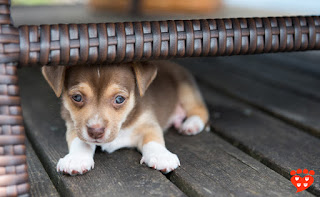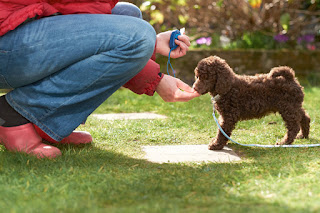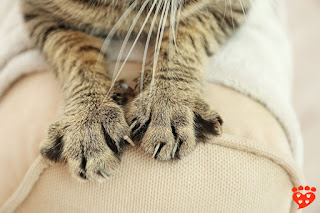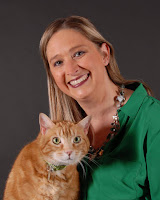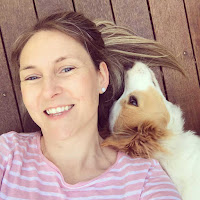Dog experts – including Marc Bekoff, Jean Donaldson, Alexandra Horowitz, Ilana Reisner, Kathy Sdao and Pete Wedderburn – weigh in on the one thing that would make the world better for dogs.
We love our canine friends. But at the same time there are lots of things we, as a society, could do to make dogs happier. So I asked several experts on dogs to answer the question, “What’s the one thing that would make the world better for dogs?”
Read on to see what they had to say. And if you're a cat person, you should also check out
how to make the world better for cats.
Marc Bekoff, PhD
Writer on dogs and other aspects of the cognitive and emotional lives of other animals for
Psychology Today and the author of numerous books including
Canine Confidential: Why Dogs Do What They Do
(March 2018, University of Chicago Press). Website
marcbekoff.com (
Twitter)
"Let dogs be dogs."
“
Let dogs be dogs. Let's appreciate them as individuals with unique personalities. Let them exercise their noses and all of their senses when they're home and out and about. Let them play with their friends and do zoomies to their heart's content. To appreciate what it's like to be a dog, we need to understand how they see, hear, touch, taste, and most of all, smell. We're most fortunate to have dogs in our lives, and we must work for the day when all dogs are most fortunate to have us in their lives. In the long run, we’ll all be better for it.”
Kristi Benson, CTC
Owner/operator at
kristibenson.com and Coach and Mentor at
The Academy for Dog Trainers. (
Twitter,
Facebook)
"If things are tough and what you’ve tried isn’t helping, reach out now. It gets better."
“Oh, what a tough question to answer! Can’t I get a top ten? I think the one thing that would make the world better for
problem dogs would be if their owners could take a page from the youth LGBT movement: namely, recognize that
it gets better. If your dog is aggressive, scared, or destructive; or embarrassing, jumping up and playing deaf…I promise it can almost certainly get better. Your dog can get better and your relationship with your dog can get better. If you can commit to training your dog, however this ends up looking—taking a reactive rover class or working one-on-one with a qualified trainer, for example—there is help to be had. And when you come out on the other side with new skills for both human and canine, a slightly different set-up at home, and some treats in your pocket, you’ll be amazed that such a colossal change was even possible. So if things are tough and what you’ve tried isn’t helping, reach out now. It gets better."
Mia Cobb
PhD Candidate at the Anthrozoology Research Group, Monash University, director of Working Dog Alliance, and blogger at
Do You Believe in Dog? (
Twitter,
Facebook)
"if people stopped to consider things (all the things!) from the canine point of view."
"I think the world would be better for dogs if people stopped to consider things (all the things!) from the canine point of view. Dogs in companion and working roles are often put into situations they wouldn't choose for themselves. We can improve dogs' quality of life by considering our decisions that impact them - how long we leave them alone each day, where they live, what training techniques we use, how we transport them, what we expect them to tolerate (from interactions with children, to dress ups and involvement in other human pursuits - like sky diving) and ask ourselves at every step, "is this what my dog wants to do, if given a choice?" Not all situations where our dogs would choose differently are avoidable (e.g. temperature taking at the vet clinic) but people should consider dogs and the way their lives are lived from the canine perspective. To see dogs as individuals who can experience a range of emotions with the capacity to suffer or thrive, both physically and mentally, based on the decisions we make about their lives – rather than just assuming that dogs like what we like, or that they are there to meet our whims, provide us with utility benefit or be our entertainment – would be a huge advance for many dogs in our world."

Jean Donaldson
Director of
The Academy for Dog Trainers and author of books including
Culture Clash
,
Train Your Dog Like a Pro
and
Mine! A Practical Guide to Resource Guarding in Dogs
. (
Jean’s twitter; Academy on
Twitter,
Facebook)
"I’m going to go with enshrinement into law of basic Dog Rights."
"It’s tough to narrow it down to one thing, but I’m going to go with enshrinement into law of basic Dog Rights, rather like the UN’s Universal Declaration of Human Rights. This law would include basics such as freedom from frank abuse, pain and suffering, as well as shelter and soft bedding, freedom to move around, good food and medical care. But it would also include the right to engage in species-normal behaviors – sniffing, playing, chewing, interacting with other dogs if they wish, and corollary education documents so that people who keep dogs as companions or work with dogs recognize fear, worry, distress or other signs that a dog is not thriving. This would help people voluntarily comply. And if it doesn’t count as a second thing, let’s have vigorous enforcement worldwide."
Sam Gaines, PhD
Head, Companion Animals Department,
RSPCA, (Sam's
Twitter; RSPCA on
Twitter,
Facebook,
Instagram)
"Think Dog!...many owners/guardians continue to treat dogs either as wolves or little people and/or fail to understand and acknowledge what dogs actually are."
“Think Dog! Despite a wealth of research into the domestic dog and a greater understanding of how they behave, think, feel and interact with us and their peers, many owners/guardians continue to treat dogs either as wolves or little people and/or fail to understand and acknowledge what dogs actually are. This can have a huge impact on their physical and mental health. For example, decades of thinking of dogs as wolves has contributed to a widespread use of management and training techniques which place dogs at serious risk of poor welfare. Similarly our failure to understand what it is to be a dog and what constitutes normal behaviour can mean a poor quality of life through lack of outlets for strongly motivated behaviour such as playing, sniffing and investigating. If dogs really are our best friends and we want them to be truly happy then we have to think dog.”
Taryn M Graham, MA
PhD Candidate at Department of Community Health Services, University of Calgary. (
Twitter)
“if we could address the underlying factors that contribute to their relinquishment."
“One thing that would make the world better for dogs is if we could address the underlying factors that contribute to their relinquishment. Behavioural concerns and housing issues are among the main reasons why people give up their pets. I wish people would acquire dogs not based on physical appearance or on latest trends, but rather, by going through a reputable source to find the right dog that matches one's personality and lifestyle. Reputable sources can provide support for dog owners, with many going as far as partnering with local dog trainers and veterinarians. Finally, to keep dogs and their owners together, I wish rental housing policy would consider pets as part of people's families. Dogs are often banned from rental housing, which impacts people's capacities to keep and care for them. “
Naomi Harvey, PhD
Research Fellow, Itchy Dog Project, School of Veterinary Sciences, University of Nottingham (
Twitter)
“Proper socialisation and habituation when young; this simply cannot be emphasised enough."
“Proper socialisation and habituation when young; this simply cannot be emphasised enough. Careful, positive exposure to all of the aspects of the human world they can expect to encounter as adults can greatly reduce their fearfulness when adults and help your dog to be emotionally stable and cope with the world it will live in. An important aspect of this is getting them used the vet clinics, by visiting regularly for simple weight checks and rewarding them whilst there, habituating them to traffic, and the sounds of parties and fireworks etc. Appropriate socialisation with different types of people, children and dogs (again conducted carefully to ensure a positive experience) will also help your dog to cope with the social world and be better adjusted for its life-course.”
Julie Hecht, MSc
PhD student at The Graduate Center, CUNY and blogger at
Scientific American DogSpies and at
Do You Believe in Dog? (Website
http://dogspies.com/,
Twitter,
Facebook)
"Create space to question assumptions and bring in new and ever-evolving information."
“The Dog is not set in stone. In the 21st Century, we live off the Internet. With the click of a button, we can find a plethora of information — as well as misinformation — about dogs.
For the love of a dog, to quote Dr. Patricia McConnell, I hope that people continually take a step back. Try and notice everyday assumptions and expectations about dogs, however small, and then consider holding on to them a little less tightly. Our beliefs about dogs needn't be set in stone because The Dog is not a stagnant, all-known being. Create space to question assumptions and bring in new and ever-evolving information, particularly from researchers, veterinarians, practitioners, and science communicators who are doing the same. This, I believe, has the potential to enhance individual dog well-being.”
Jessica Hekman, DVM PhD
Postdoctoral Associate at the Karlsson Lab in the Broad Institute of Harvard and MIT and blogger at
The Dog Zombie. (Website
http://www.dogzombie.com/,
Twitter,
Facebook)
"I'd love more dog lovers to become aware of the problems with how we breed dogs."
“We can make the world better for dogs by making dogs who fit into the world better. I would love to see dog owners draw a line in the sand and insist on dogs with muzzles long enough to let them breathe normally, or dogs who are not born with a 60% chance of developing cancer at some point in their lives due to their breed, or dogs whose heads are too big for them to be born without a C-section. I'd love to see more breeders taking matters into their own hands and starting to experiment with how we breed dogs instead of continuing to use dogs from within breeds lacking in genetic diversity. I'd love to see more breed clubs supporting outcrossing projects to bring an influx of genetic diversity and healthy alleles into their breed. I'd love more dog lovers to become aware of the problems with how we breed dogs - how even the most responsible breeders breed dogs! This year, it is time for change.”
Christy Hoffman PhD
Assistant Professor in the Department of Animal Behavior, Ecology, and Conservation and Director of the Anthrozoology Master’s program at Canisius College. (
Facebook)
"more work needs to be done to keep dogs with people who love them but need assistance."
“The animal shelter community has made tremendous strides toward reducing the number of dogs living in animal shelters; however, more work needs to be done to keep dogs with people who love them but need assistance. The world would be better for dogs if more dog owners knew about pet retention resources in their communities. Let’s face it, any of us could fall on hard times, making it a struggle to care for our dogs. Fortunately, many communities have pet food pantries, low-cost veterinary services, and affordable, pet-friendly housing options for people in financial distress, but these services are not helpful unless the people who need them know about them. Some of my students in Canisius College’s Anthrozoology Master’s program spent the past month compiling information about pet retention resources in their communities. Many found that excellent resources existed, but locating those resources typically required making multiple phone calls, sending many e-mails, and even making in-person visits to organizations. My students realized that people experiencing financial crises may not have the time and technology required to track down hard-to-find resources. This project helped my students and me realize that connecting information about pet retention resources with the dog owners who need them would be a way to make the world better for dogs.”
Alexandra Horowitz, PhD
Barnard College, Columbia University and the Horowitz Dog Cognition Lab, author of books including the bestselling
Inside of a Dog: What Dogs See, Smell, and Know
and
Being a Dog: Following the Dog Into a World of Smell
. (Website
https://alexandrahorowitz.net/,
Twitter,
Facebook,
Instagram). Photo credit Vegar Abelsnes.
"Let them sniff... Their world is made of scents more than sights."
“Let them sniff. Perhaps because we humans are so visually-centered, it's hard for us to imagine what it might be like for our primary sensory ability to be olfaction. But that's how it is for dogs: they sniff first, and ask their eyes to confirm or deny. Their world is made of scents more than sights. As a result, when they agreeably head out with you for a walk, the two of you are experiencing parallel universes: we see what's on the street; the dog smells who's passed by and who is upcoming (on the breeze). Since humans are generally averse to closely smelling things -- in fact, we find the idea of "smelling" one another funny or even rude -- some owners discourage dogs from doing that -- from sniffing one another or the traces other dogs have left. But that is the dog's whole world. I would no more pull my dog away from a street corner he is mightily investigating than I would force my son to stare at his knees as we drive by the Colosseum. Acknowledging the dogs' otherness -- and in this case, his different way of perceiving the world you share -- is a good step toward giving them the life they deserve.”
Kim Monteith, CTC
Manager, Animal Welfare, BC SPCA. (Kim's
Twitter; BC SPCA Website
http://spca.bc.ca/ and
Twitter,
Facebook,
Instagram)
"The one thing I believe will make the world a better place for dogs is standards in dog training."
"The one thing I believe will make the world a better place for dogs is standards in dog training. The dog training business is unregulated which means any one can take a course, hang a 'professional trainer' sign on their door, and give advice. This lack of accountability often results in information and training that is either ineffective, wrong and/or abusive. Every day I see dogs who suffer from training, handling and even owner expectations, along with owners who feel guilty because they’re told to use techniques and tools that scare and hurt their dog. I truly believe owners don’t want to hurt or scare their dogs and people get into the business of training to help dogs and have good intentions. It’s the nonexistence of regulations that allow even the trainers to be misguided and misinformed. If we want to do better for dogs, demand training based on the science of learning theory and seek out trainers with the knowledge and skills to train both dogs and people using humane methods. If we bring dogs into our lives we owe it to them to do better by them. Until we have standards, remember we may not know what dogs are thinking, however we know they experience fear and anxiety, so have empathy when you’re handling, caring for and training a dog.”
Tamara Montrose, PhD
Programme Manager MRes Animal Behaviour and Welfare and BSc Hons Animal Behaviour and Welfare, Hartpury College. (
Twitter)
"Greater use of sensory enrichment would be beneficial for shelter dogs, to reduce stress."
“Large numbers of dogs are kept in rescue shelters which are often stressful environments for the residents. I believe that greater use of sensory enrichment, such as classical music and audiobooks, would be beneficial for shelter dogs to reduce stress and potentially improve welfare. Such enrichment also tends to be easily applied and relatively inexpensive which is an important consideration in shelters. In addition, using sensory enrichment that is not only beneficial to dogs but also appreciated by visitors may have the potential to encourage them to spend more time at the shelter and potentially help adoption rates.”
Kate Mornement, PhD
Pets Behaving Badly – Solutions with Dr. Kate. (Website
http://petsbehavingbadly.com.au/,
Twitter,
Facebook)
“if every dog owner understood that their dog’s behaviour, good and bad, is motivated purely by consequences, not their dogs desire to be “leader of the pack”."
“The world would be a better place for dogs is if every dog owner understood that their dog’s behaviour, good and bad, is motivated purely by consequences, not their dogs desire to be “leader of the pack”. The myth that we must dominate dogs, or else they will assume the alpha position, is outdated and incorrect. Thanks to a recent explosion in the depth and breadth of canine research over the last 15 years, our understanding of dogs has improved dramatically. We now know that dogs are not trying to be the boss; they just do what works for them. Behaviours that have a desired consequence are repeated whereas behaviours that don’t tend to stop. It’s the same for us humans and, in fact, every other living being on the planet! This is why positive reinforcement training is so effective. When dogs (and other animals) are reinforced with things they like for desired behaviour, they quickly learn to repeat those behaviours. Recent science has also taught us that physically punishing dogs (smacking; popping the check chain) for undesired behaviour can adversely affect their welfare and the human-animal bond and punishment doesn’t teach the dog what to do instead. Unfortunately, this relatively new understanding of dog behaviour, learning and training has not become common knowledge amongst the general population and the old paradigm persists. It’s up to those of us who have this new understanding of dogs to share our knowledge far and wide to make the world a better place for dogs.”
Ilana Reisner, DVM PhD DACVB
Reisner Veterinary Behaviour and Consulting Services (Website
http://www.reisnervetbehavior.com/,
Twitter,
Facebook)
"We are capable of making choices; choosing to train dogs with kindness and generosity is an important one."
“We can make the world better for dogs by recognizing that we are ultimately responsible for everything they experience, from their eating and elimination schedule, to their exercise and access to both wonderful and frightening things. Once we recognize that we humans are responsible for all of it and that dogs are powerless animals whose welfare depends on us, kindness and consideration naturally follow. Dogs make choices when they have the opportunity – to be warm, well fed, near the people and animals to whom they’re attached (an important one!), and to be safe; we humans are the ones to present those opportunities. Force-free behavior modification then makes sense: if you want to influence what a dog does, offer appropriate choices, give the dog time to choose, and reinforce the behavior you want. If the dog makes the wrong choice, try again – don’t punish. Punishment leads to stress and unravels trust so that choice-making is inhibited. We are also capable of making choices; choosing to train dogs with kindness and generosity is an important one."
Kathy Sdao, MA
Bright Spot Dog Training and author of
Plenty in Life Is Free: Reflections on Dogs, Training and Finding Grace
(Website
http://www.kathysdao.com/,
Twitter) Photo credit Michael Hanson.
"I’d ask humans to take their dogs’ misbehaviors less personally."
“If I got to choose just one thing that would make the world better for dogs, I’d ask humans to take their dogs’ misbehaviors less personally. Your dog isn't trying to be boss or ruin your day; he’s trying to get his needs met. Imagine if each training challenge we faced – to create a more responsive, cooperative, civilized dog – was viewed as our invitation to become more curious about how behavior functions and changes. Then every lunging, barking or biting dog would be recognized as a learner, evolutionarily prepared to adapt his behavioral repertoire to the changing environment. What freedom we’d have to stop punishing and to start exploring the joy of true dialogue with another species.”
Pete Wedderburn, BVM&S CertVR MRCVS
Media veterinarian and author of books including
Pet Subjects: Animal Tales from the Telegraph's Resident Vet
. (Website
https://www.petethevet.com/,
Twitter,
Facebook,
Instagram)
“If humans started to breed dogs with good health as the only priority."
“If humans started to breed dogs with good health as the only priority. Currently, dogs are bred to meet human ideas of cuteness, with flattened noses, bulgy eyes, short legs, and an assortment of other physical features. Often these physical features cause ill health and suffering, such as the difficulties brachycephalic dogs have with breathing (who doesn't know a snorting, snuffling Bulldog?) with many other examples too. Meanwhile pedigree dogs are also, by definition, in-bred, from a small pool of animals of the same breed, and this directly causes an increased incidence in some illnesses (such as cancer in Flat Coated Retrievers). If humans stopped worrying so much about the cute appearance and "breed pureness" of puppies, the resulting canine population would be healthier, and the dogs would be happier too.”
Carri Westgarth, PhD
Tenure Track Research Fellow at the Department of Epidemiology and Population Health, Institute of Infection and Global Health and School of Veterinary Science, University of Liverpool. (
Twitter,
Facebook)
“One thing I think would make the world better for dogs is if they all got taken for an off-leash walk every day."
“One thing I think would make the world better for dogs is if they all got taken for an off-leash walk every day. There is no greater joy as a dog owner than to see bum tucked under, head back, doing zoomies across the grass. So many dogs don’t get this opportunity. Perhaps their owners don’t have access to a suitable and safe environment to walk them in this way, or don’t have enough time in their busy schedules. Perhaps they are struggling with their dog’s behaviour on walks and having to confine them to a lead, a vicious circle. Most worryingly to me, many dogs are incapable of running around due to the conformation they have been bred with, or most commonly the fact that they are overweight. In order to run around like this and experience this joy of what it is to be a dog, fitness and lean body condition are key. We often think about obesity being caused BY lack of exercise, but it is also a massive cause OF lack of exercise. When I worked as an Assistance Dog trainer, we sometimes had to manage dogs through a weight loss programme. It was amazing seeing both the physical and mental transformation from pudgy plodder to lithe racer. If my wish could be achieved, both dogs and their owners would live much happier lives.”
If you like this post, please share with friends and family. Together we can make the world better for our canine friends!
What's the one thing you think would make the world better for dogs?
Subscribe to Companion Animal Psychology to learn how to have happy dogs and cats.
Companion Animal Psychology is a participant in the Amazon Services LLC Associates Program, an affiliate advertising program designed to provide a means for sites to earn advertising fees by advertising and linking to Amazon.com and affiliated sites.
Companion Animal Psychology is also a participant in the Etsy Affiliate Program, an affiliate advertising program designed to provide a means for sites to earn advertising fees by advertising and linking to Etsy.com.








